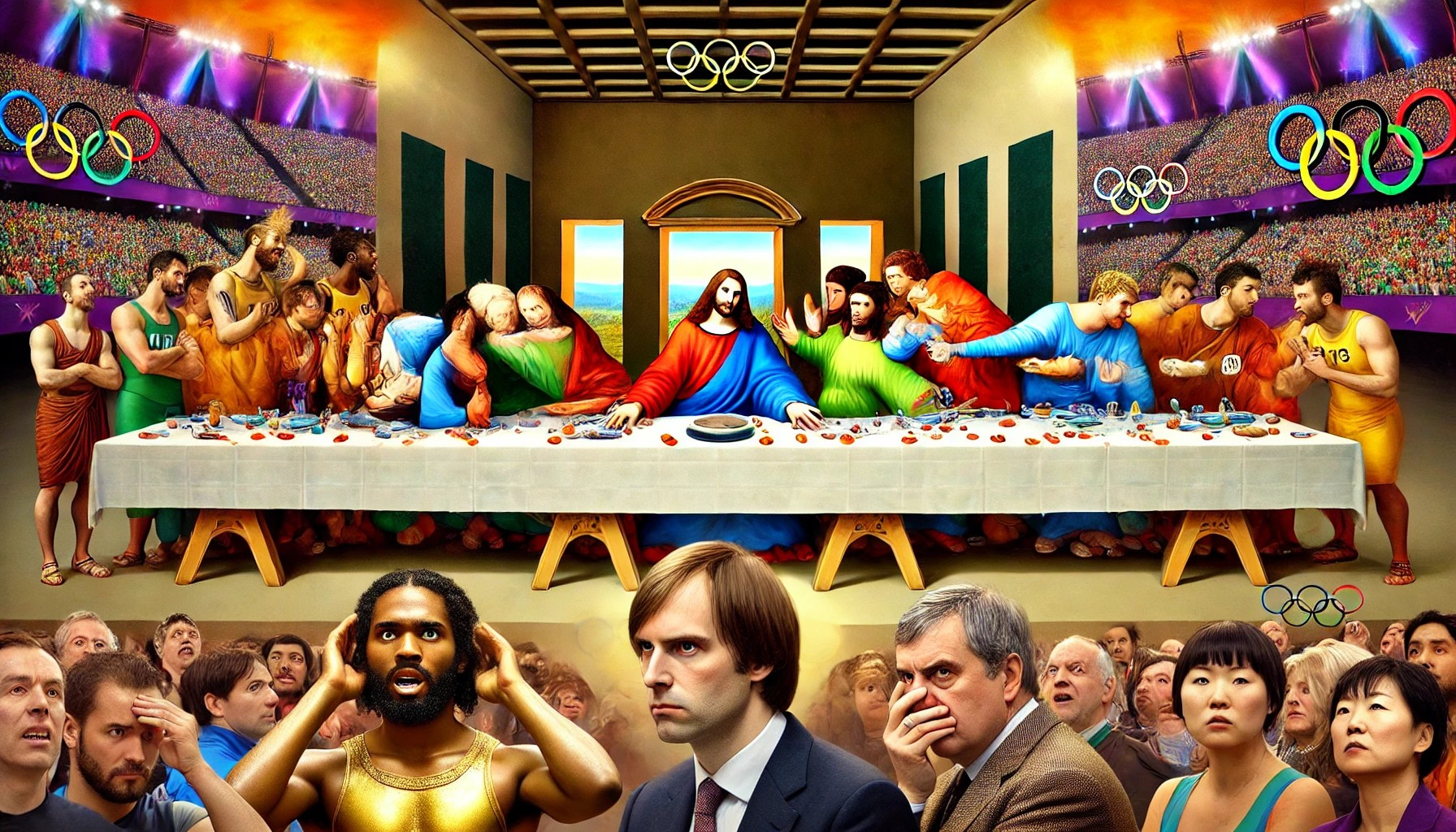Andrew Tate Criticizes Last Supper Parody at Olympics for Disrespecting Religious Symbols
In a surprising turn of events, controversial internet personality Andrew Tate has publicly condemned a parody of the Last Supper featured at the Olympics opening ceremony. The depiction, intended as a piece of modern art reflecting global unity and diversity, has sparked a heated debate on the boundaries of artistic expression and respect for religious symbols, particularly concerning predominantly Christian nations like the Philippines.
The Olympic opening ceremony, known for its elaborate and often provocative artistic presentations, included a segment where performers recreated the iconic scene of Leonardo da Vinci’s Last Supper. The interpretation aimed to symbolize global togetherness, featuring athletes and representatives from various cultures and backgrounds. However, the presentation drew immediate criticism from Tate, who took to social media to express his outrage.
Tate, known for his polarizing views and outspoken nature, labeled the performance as “disrespectful” and “blasphemous,” arguing that it trivialized a sacred Christian symbol. He specifically pointed out that the parody replaced traditional figures, including Jesus and the apostles, with athletes and other performers, which he felt was a mockery of a solemn and revered religious event. Tate argued that the casual and artistic reinterpretation of such a profound religious scene was inappropriate for a global event like the Olympics, which should respect diverse religious sentiments.
The controversy surrounding the parody of the Last Supper at the Olympics opening ceremony, as highlighted by Tate’s protest, has not specifically mentioned or focused on the Philippines as being insulted. The critique appears to be centered around the general use of a religious symbol, which is sacred in Christianity, rather than targeting any particular nationality or group. However, given that the Philippines is predominantly a Christian country with a significant Catholic population, there might be concerns or sensitivities among Filipinos regarding the portrayal of religious symbols. If prominent Filipino figures or religious leaders had publicly commented on the parody, their reactions could provide more insight into whether the depiction was perceived as offensive or disrespectful within the country. As of now, the available information primarily focuses on the broader debate about artistic expression and respect for religious symbols, rather than specific national or cultural offenses.
The parody has drawn mixed reactions from the public and religious communities. Some supporters argue that the depiction was a creative and inclusive way to represent unity and diversity, aligning with the spirit of the Olympics. They emphasize the importance of freedom of expression in art, even when it challenges traditional perspectives.
However, critics, including religious leaders and conservative commentators, have sided with Tate, expressing concern over what they see as a growing trend of disrespect towards religious symbols. They argue that such representations, especially in a global event like the Olympics, should be approached with sensitivity and respect. In countries like the Philippines, where Christianity plays a central role in cultural and social life, such depictions can be particularly sensitive.
The organizers of the Olympics have yet to officially respond to the controversy. Still, sources close to the event have indicated that the segment was intended to celebrate diversity and was not meant to offend any religious beliefs. They highlighted that the Olympics have a long history of incorporating cultural and artistic elements to promote global unity and understanding.
The incident has reignited debates over the role of art in society and the responsibilities of public figures in addressing sensitive topics. While some view Tate’s protest as an overreaction, others see it as a valid defense of religious respect.
As the conversation continues, it highlights the complex interplay between art, religion, and public perception in today’s globalized world. The Olympics, as a stage for showcasing cultural expression, often finds itself at the center of such debates, reflecting broader societal values and tensions.
The fallout from this incident may influence future artistic presentations at major international events, potentially leading to more cautious and considered approaches to the inclusion of religious and cultural symbols. For now, the debate over the Last Supper parody serves as a reminder of the power of art to provoke thought and the diverse responses it can elicit.

